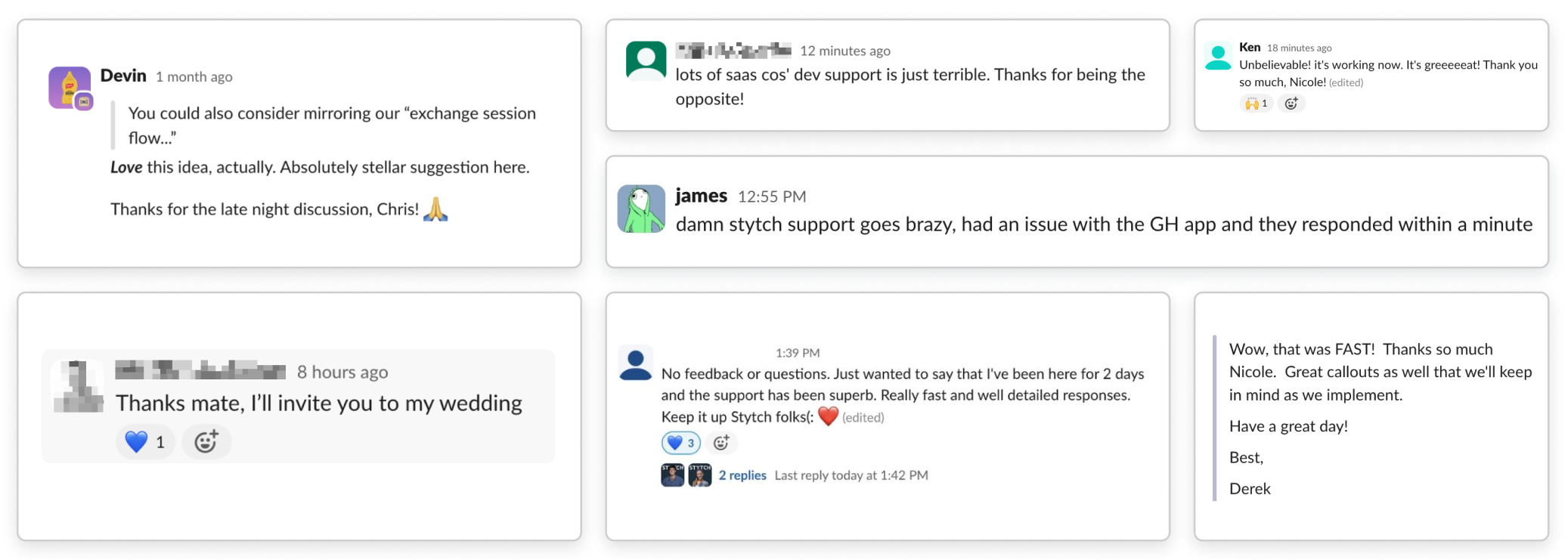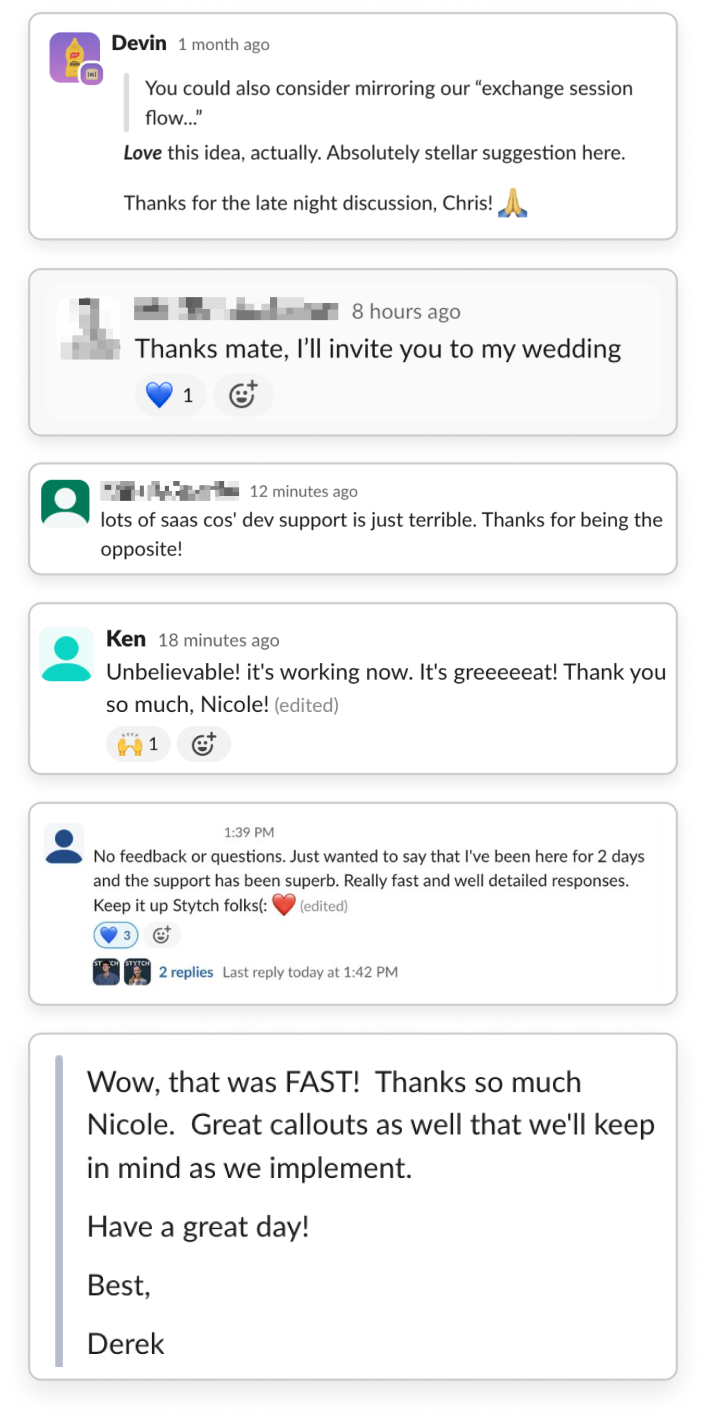The most powerful alternative to Firebase
Spend less time on auth
Easy to maintain authentication and security, maximum flexibility with your backend stack, and more hands-on support than Google can provide.
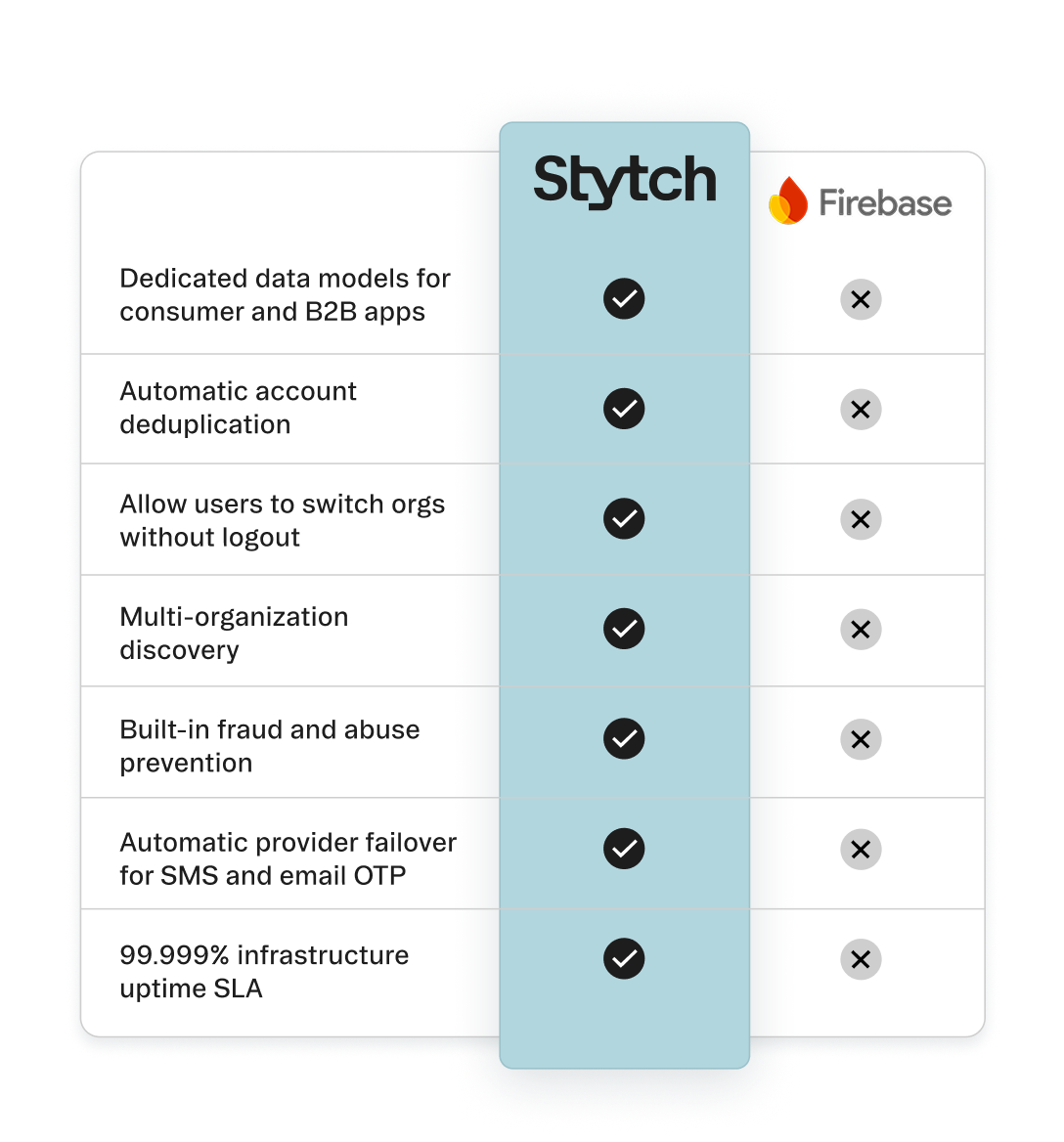
AuthN and AuthZ infrastructure with unparalleled flexibility
Auth how you want it, with pre-built UI, headless frontend SDKs, and backend APIs and SDKs
Simplify your codebase with tailored data models for consumer and B2B auth, freeing you from complex middleware
Scale with ease. MFA, SSO, RBAC, and SCIM—your entire auth roadmap, just an API call away
Manage users, organizations, and auth settings directly in your dashboard with an embeddable admin portal
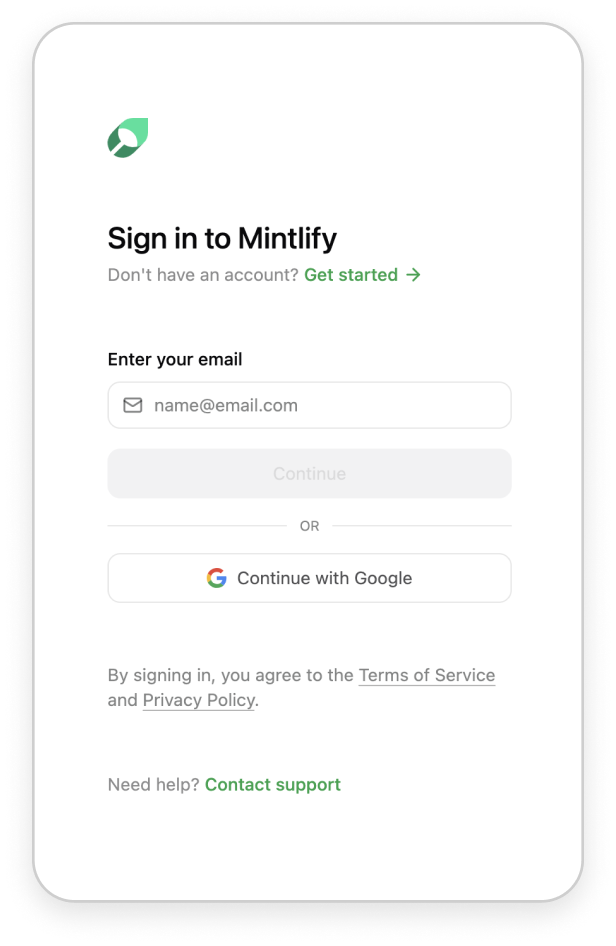
Lower friction UX. Higher-converting signups
Faster OAuth integration
Stytch normalizes data models and nomenclature across providers, making OAuth easy and intuitive to integrate.
Account de-duplication
If a user signs up with their email address and later signs in via social login, Stytch automatically links and safely de-duplicates the accounts.
Simplified org discovery and login flow
With opt-in just-in-time provisioning by validated email domain, self serve organization creation and surfacing of pending invites.
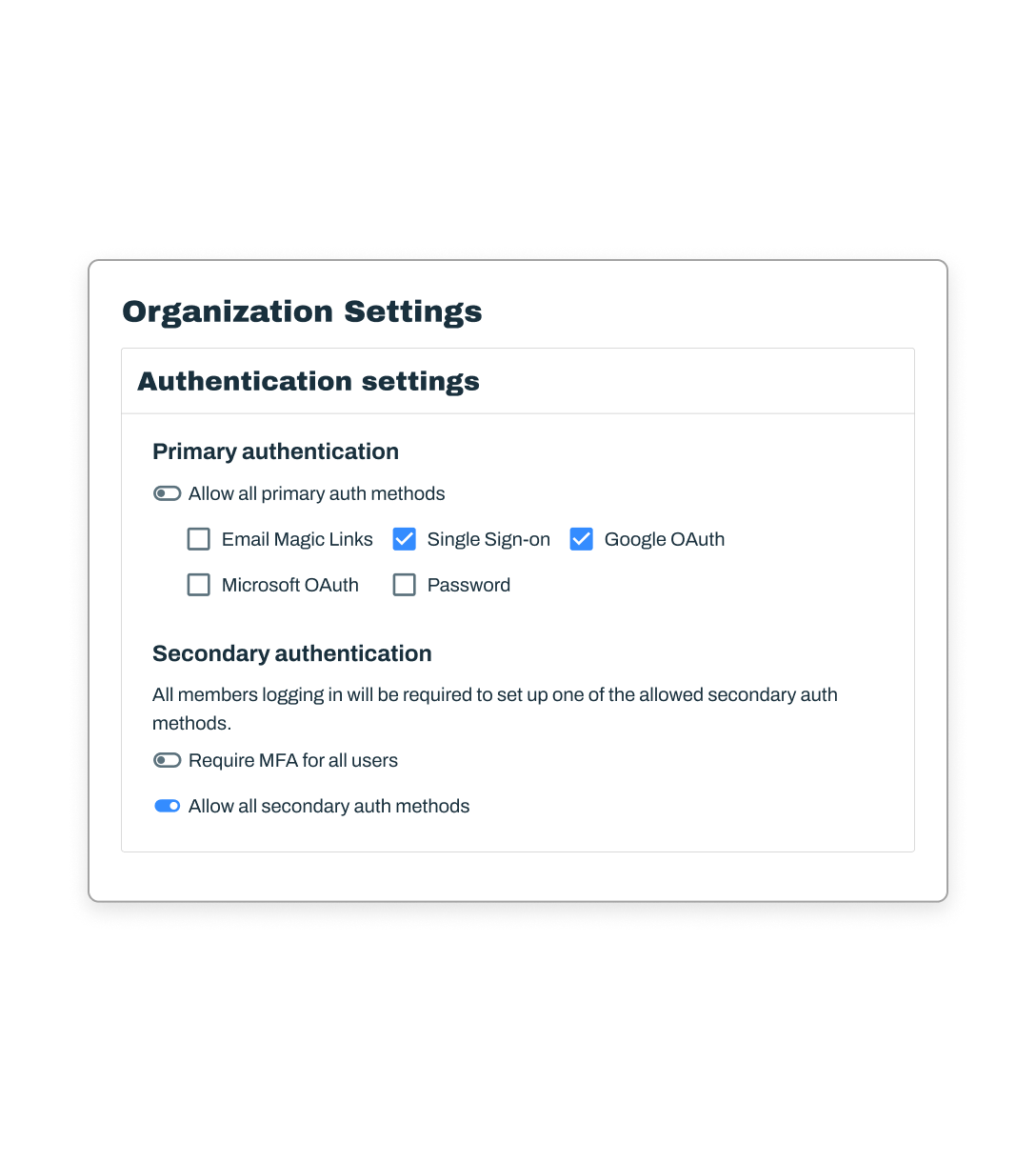
No building admin portals from scratch
Unlike Firebase, which forces you to build your own admin portal manually with their Admin SDK endpoints, Stytch provides a SDK and components to embed an admin portal directly into your application. This interface empowers admins to configure and manage enterprise auth features like SSO within your platform without needing to build it yourself.
Leading fraud and abuse protection, built-in
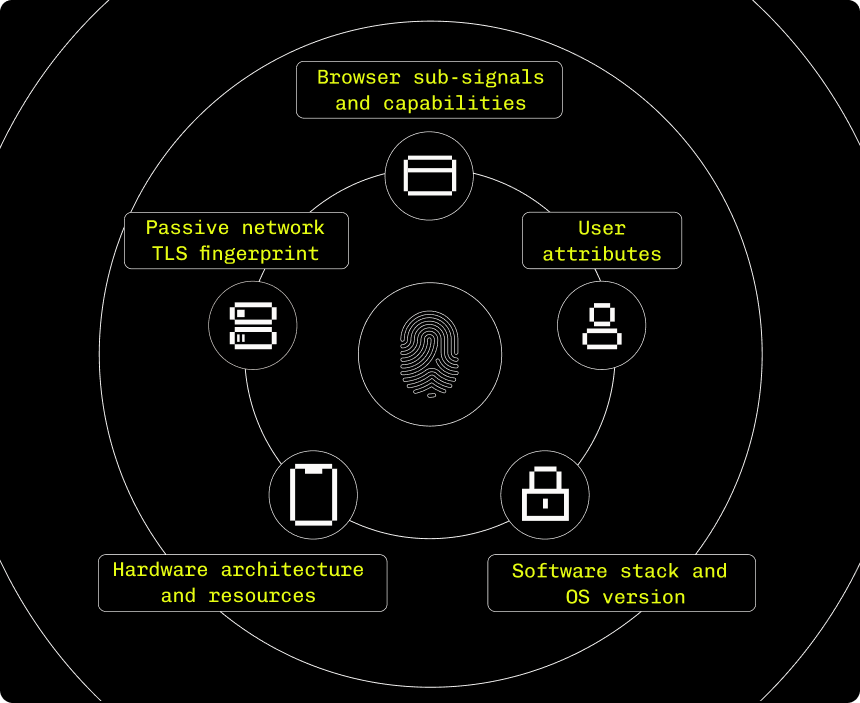
The world's most powerful fingerprint
Device intelligence built on a powerful combination of deterministic signals and supervised machine learning.
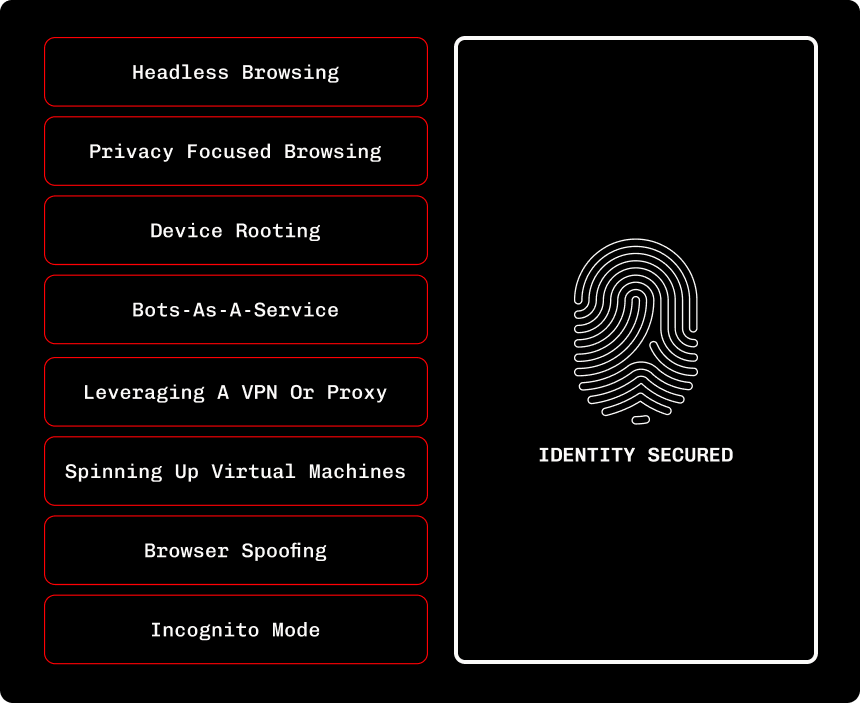
Hardened against the most sophisticated attackers.
Immutable and resistant to evasion or reverse engineering, all while preserving user privacy.
What engineering teams are saying
Short, precise docs make all the difference for a great integration experience. Stytch’s docs were a breeze, and their illustrations and code examples helped a lot. It took us only four days to switch from Firebase to Stytch, and we created a new front end for the integration.
Short, precise docs make all the difference for a great integration experience. Stytch’s docs were a breeze, and their illustrations and code examples helped a lot. It took us only four days to switch from Firebase to Stytch, and we created a new front end for the integration.
Detailed feature comparison
Auth features | ||
|---|---|---|
Email/password login | ||
Email/password login | Supported | Supported |
Password reset flow | ||
Password reset flow | Supported | Supported |
Password breach detection | ||
Password breach detection | Supported | Not supported |
One-Time Passcode (OTP) via SMS and Email | ||
One-Time Passcode (OTP) via SMS and Email | Supported | Support for SMS OTP only |
One-Time Passcode (OTP), built-in email & SMS with provider failover | ||
One-Time Passcode (OTP), built-in email & SMS with provider failover | Supported | Not supported |
Email magic link | ||
Email magic link | Supported | Supported |
Embeddable magic links | ||
Embeddable magic links | Supported | Not supported |
Smart email magic links with passcode delivery protection | ||
Smart email magic links with passcode delivery protection | Supported | Not supported |
Social OAuth, support across major identity providers | ||
Social OAuth, support across major identity providers | Supported | Only supports a few identity providers |
Social OAuth, Built-in support for Google One-Tap | ||
Social OAuth, Built-in support for Google One-Tap | Supported | Not supported |
Native mobile biometrics | ||
Native mobile biometrics | Supported across iOS, Android, and React Native SDKs | Not supported |
WebAuthn | ||
WebAuthn | Supported | Requires integrating 3rd party |
Time-Based OTP (authenticator apps) | ||
Time-Based OTP (authenticator apps) | Supported | Supported |
OIDC & SAML SSO | ||
OIDC & SAML SSO | Supported | Supported |
Machine-to-Machine (M2M) | ||
Machine-to-Machine (M2M) | Supported | Requires custom solution |
Web3 Login | ||
Web3 Login | Ethereum & Solana login | Not supported |
Organization Management | ||
Migrate users to either a new auth method (eg. SSO) or IdP | ||
Migrate users to either a new auth method (eg. SSO) or IdP | Supported | Not supported |
Allow users to change orgs without logging out: Honoring each org's distinct authentication requirements (Auth method + MFA policy) | ||
Allow users to change orgs without logging out: Honoring each org's distinct authentication requirements (Auth method + MFA policy) | Supported | Not supported |
Allow users to have different profiles per org | ||
Allow users to have different profiles per org | Supported | Not supported |
New users can self-serve, create new orgs | ||
New users can self-serve, create new orgs | Supported | Not supported |
Per-organization MFA controls | ||
Per-organization MFA controls | Supported | Not supported |
Multi-organization discovery | ||
Multi-organization discovery | Supported | Not supported |
Authorization | ||
SCIM | ||
SCIM | Supported | Requires third party integration |
RBAC basic functionality | ||
RBAC basic functionality | Supported | Supported |
RBAC default role assigment at 1st login | ||
RBAC default role assigment at 1st login | Supported | Not supported |
RBAC implicit many-to-many role assignments | ||
RBAC implicit many-to-many role assignments | Supported | Not supported |
Operations and Scale | ||
Account deduplication | ||
Account deduplication | Supported | Not supported |
JIT provisioning of new users (e.g. by email domain or sso connection; with per organization controls) | ||
JIT provisioning of new users (e.g. by email domain or sso connection; with per organization controls) | Supported | Not supported |
Enforce per-Organization auth requirements (e.g. OrgA requires Google OAuth while OrgB requires SSO via their 2 IdPs) | ||
Enforce per-Organization auth requirements (e.g. OrgA requires Google OAuth while OrgB requires SSO via their 2 IdPs) | Supported | Not supported |
Fraud and Risk Prevention | ||
Device Fingerprinting | ||
Device Fingerprinting | Supported | Not supported |
Device Fingerprinting protected authentication | ||
Device Fingerprinting protected authentication | Supported | Not supported |
Risk-based actions: Allow, Block, Challenge | ||
Risk-based actions: Allow, Block, Challenge | Supported | Not supported |
Captcha | ||
Captcha | Supported | Supported |
Strong CAPTCHA. Bot farm resistant: Prevents CAPTCHA bypass from tools like 2captcha.com & anti-captcha.com | ||
Strong CAPTCHA. Bot farm resistant: Prevents CAPTCHA bypass from tools like 2captcha.com & anti-captcha.com | Supported | Not supported |
Frontend UI | ||
Headless implementation | ||
Headless implementation | Via web & mobile SDKs | Not supported |
UI whitelabeling | ||
UI whitelabeling | Supported | Supported |
Full UI control and customization | ||
Full UI control and customization | API access for full customization | Option to use FirebaseUI or Firebase SDK only |
Prebuilt Admin Portal UI | ||
Prebuilt Admin Portal UI | Supported | Requires building it yourself with Firebase Admin SDK |
Ready to try Stytch?
We have a lot of migration experience – from Firebase, Auth0, Cognito, in-house, you name it – and we’re here to help make your switch to Stytch as seamless as possible.
